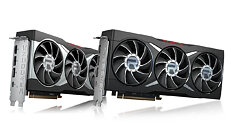Andes Technology Unveils The AndesCore AX60 Series, An Out-Of-Order Superscalar Multicore RISC-V Processor Family
Today, at Linley Fall Processor Conference 2022, Andes Technology, a leading provider of high efficiency, low power 32/64-bit RISC-V processor cores and founding premier member of RISC-V International, reveals its top-of-the-line AndesCore AX60 series of power and area efficient out-of-order 64-bit processors. The family of processors are intended to run heavy-duty OS and applications with compute intensive requirements such as advanced driver-assistance systems (ADAS), artificial intelligence (AI), augmented/virtual reality (AR/VR), datacenter accelerators, 5G infrastructure, high-speed networking, and enterprise storage.
The first member of the AX60 series, the AX65, supports the latest RISC-V architecture extensions such as the scalar cryptography extension and bit manipulation extension. It is a 4-way superscalar with Out-of-Order (OoO) execution in a 13-stage pipeline. It fetches 4 to 8 instructions per cycle guided by highly accurate TAGE branch predictor with loop prediction to ensure fetch efficiency. It then decodes, renames and dispatches up to 4 instructions into 8 execution units, including 4 integer units, 2 full load/store units, and 2 floating-point units. Besides the load/store units, the AX65's aggressive memory subsystem also includes split 2-level TLBs with multiple concurrent table walkers and up to 64 outstanding load/store instructions.
The first member of the AX60 series, the AX65, supports the latest RISC-V architecture extensions such as the scalar cryptography extension and bit manipulation extension. It is a 4-way superscalar with Out-of-Order (OoO) execution in a 13-stage pipeline. It fetches 4 to 8 instructions per cycle guided by highly accurate TAGE branch predictor with loop prediction to ensure fetch efficiency. It then decodes, renames and dispatches up to 4 instructions into 8 execution units, including 4 integer units, 2 full load/store units, and 2 floating-point units. Besides the load/store units, the AX65's aggressive memory subsystem also includes split 2-level TLBs with multiple concurrent table walkers and up to 64 outstanding load/store instructions.

















































